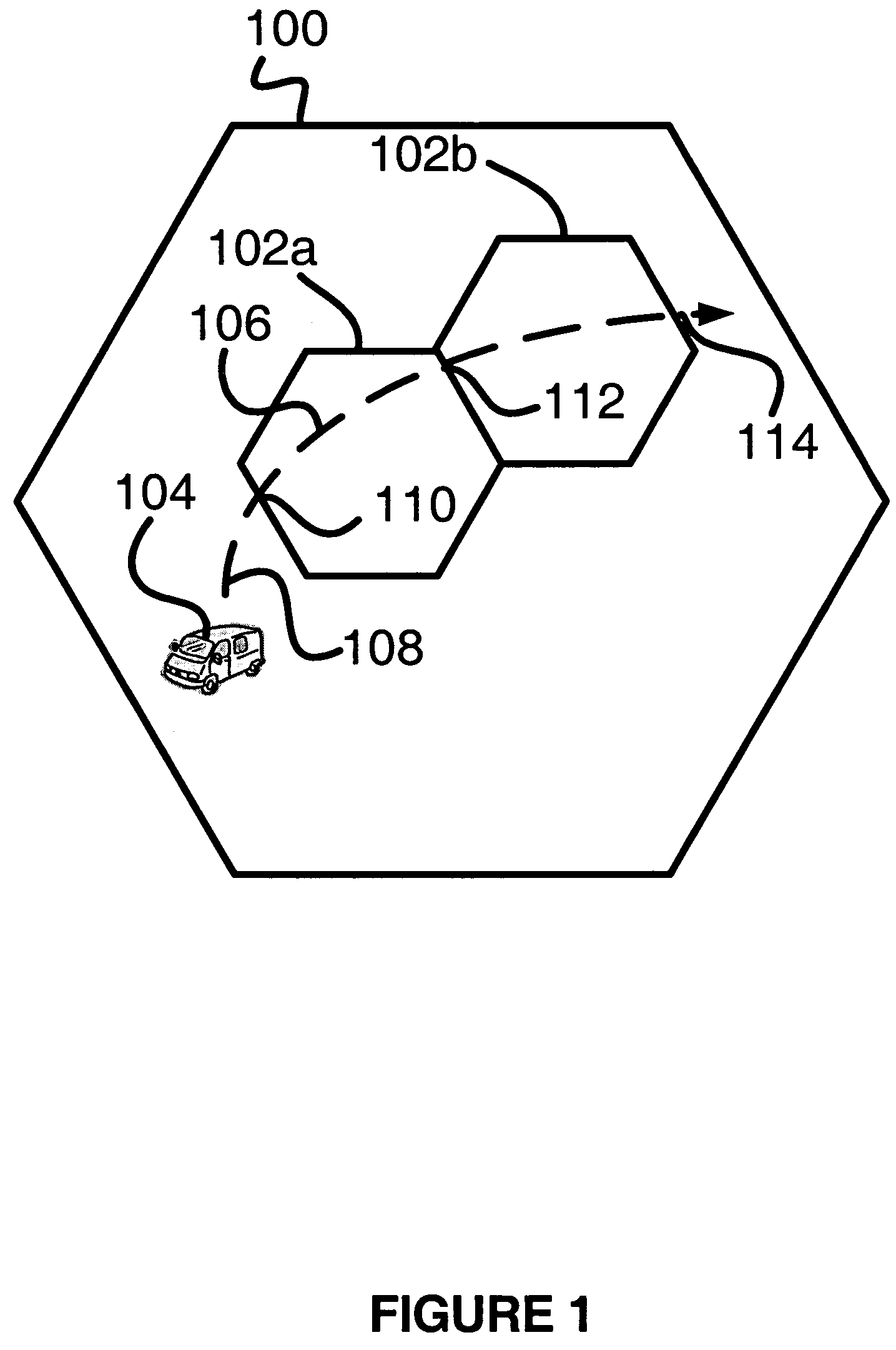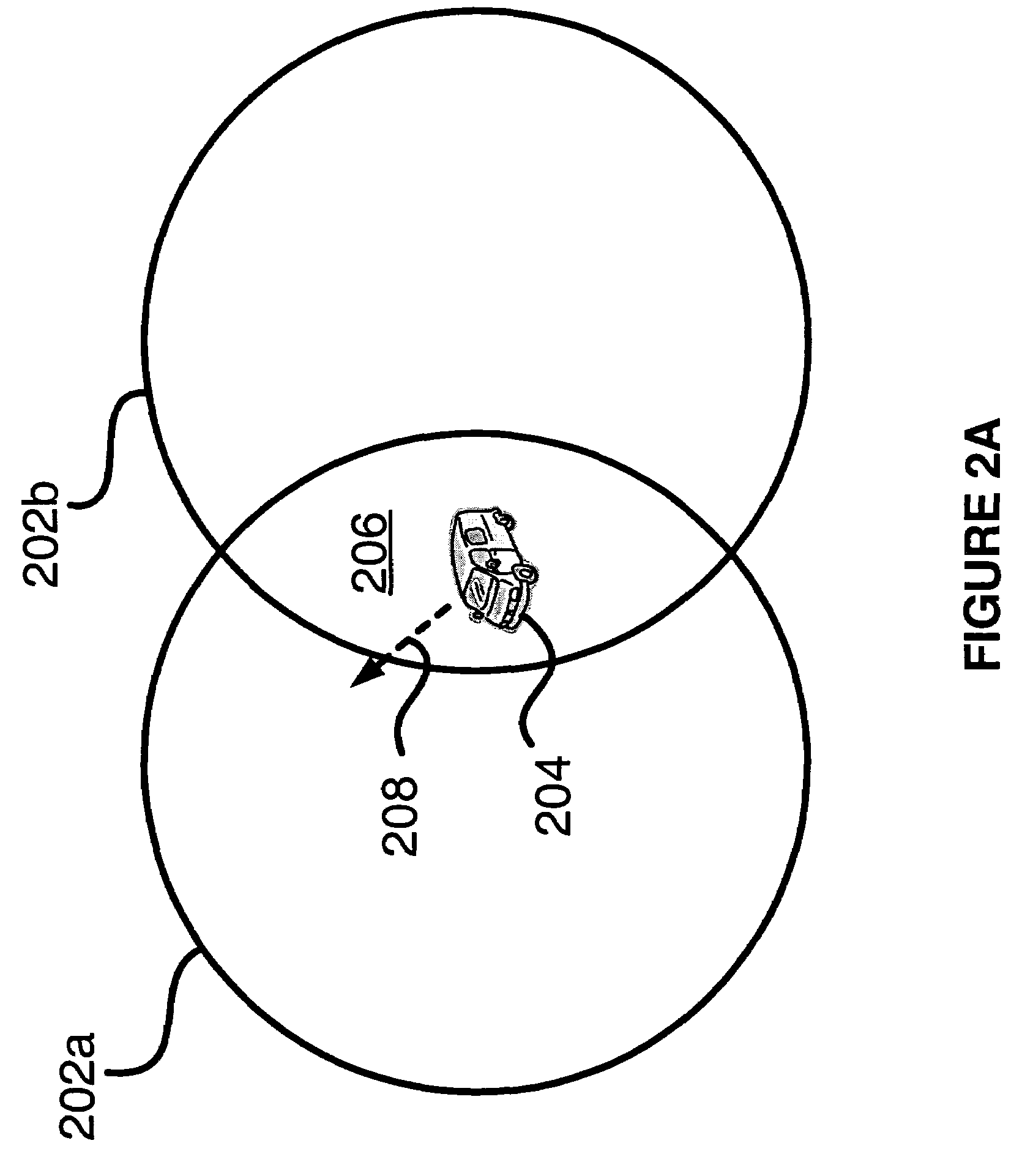System of and method for using position, velocity, or direction of motion estimates to support handover decisions
a technology of position, velocity or direction of motion, applied in the field of position determination and wireless communications, can solve the problems of excessive number of handovers triggered by the movement of the subscriber station, consuming a substantial amount of network resources or overhead to implement, and consuming a large amount of network resources
- Summary
- Abstract
- Description
- Claims
- Application Information
AI Technical Summary
Benefits of technology
Problems solved by technology
Method used
Image
Examples
embodiment 700
[0055]FIG. 7 illustrates an embodiment 700 which is triggered by a timeout condition occurring while the subscriber station is within the coverage area of and is being serviced by an umbrella cell. This timeout condition indicates that the subscriber station has not experienced a handover within a prescribed period of time.
[0056]In response, step 704 is performed. Step 704 comprises obtaining an estimate of the velocity of the subscriber station. Inquiry step 706 follows step 704. In inquiry step 706, a determination is made whether the velocity of the subscriber station is less than or equal to a threshold. If not, the method ends. In so, step 708 is performed. In step 708, a handover to a micro-cell is enabled.
[0057]This embodiment may be performed after the subscriber station has been handed over to an umbrella cell pursuant to the method of FIG. 6. It seeks to allow the subscriber station to be handed back to a micro-cell (for purposes of load balancing or the like) once the vel...
third embodiment
[0067]In a third embodiment, the triggering event is a directed retry condition prompted by a blocked call or the like experienced by the subscriber station. In response to this triggering event, the one or more entities are configured to obtain an estimate of position, velocity or direction of motion of the subscriber station, and then use the estimate, or information derived there-from, to support a handover decision.
[0068]In one example, a plurality of estimates relating to the subscriber station are obtained, and the handover executed if the estimates indicate (1) the subscriber station is positioned closer to a target cell than the serving cell; or (2) the subscriber station is moving towards the target cell and away from the serving cell.
PUM
 Login to View More
Login to View More Abstract
Description
Claims
Application Information
 Login to View More
Login to View More - R&D
- Intellectual Property
- Life Sciences
- Materials
- Tech Scout
- Unparalleled Data Quality
- Higher Quality Content
- 60% Fewer Hallucinations
Browse by: Latest US Patents, China's latest patents, Technical Efficacy Thesaurus, Application Domain, Technology Topic, Popular Technical Reports.
© 2025 PatSnap. All rights reserved.Legal|Privacy policy|Modern Slavery Act Transparency Statement|Sitemap|About US| Contact US: help@patsnap.com



